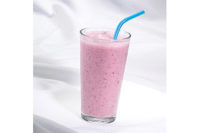Advances in knowledge about how the types and amounts of protein affect human health have ignited interest in consuming more protein as well as innovations in protein fortification. How can the dairy industry position protein-fortified products to the best advantage?
For starters, let’s consider consumers’ perceptions of protein-fortified products. Experts at Agropur Ingredients, La Crosse, Wis., have witnessed extremely positive reactions to both naturally containing and protein-fortified products.
Phanin Leksrisompong of Davisco Foods International, Eden Prairie, Minn., said consumers don’t discriminate between the two, noting that the demand for whey-protein fortified products is increasing due to a growing demand for natural, healthy and quality high-protein ingredients.
“In general, consumers look at labels for total protein content,” noted Cheryl Reid, Arla Foods Ingredients Group, Basking Ridge, N.J.
In contrast, Vikki Nicholson of the Arlington, Va.-based U.S. Dairy Export Council noted that nearly 60% of consumers agree that protein should be in its natural form and only 26% believe protein-enriched foods are just as good as items that naturally contain protein.
“That’s not to say consumers aren’t purchasing protein-enriched foods,” she said. “Nearly half of primary grocery shoppers have purchased protein-enriched foods and 30% of consumers would like to see more protein-enriched foods.”
These differing perspectives may be due to consumers’ individual needs and preferences. Megan Keepes, DuPont Nutrition & Health, New Century, Kan., explained that consumers’ preference for naturally containing protein versus protein-fortified is dependent on many lifestyle factors and is often occasion-specific. For example, consumers with active, busy lifestyles may prefer protein-fortified products as a convenient, efficient way to meet protein needs.
Consider the source
Both single-source protein ingredients and protein blends have met with market success. The advantages of blends may include improved cost, sustainability, flavor synergies, functional properties, and nutritional benefits. Dina Fernandez and Julio López Cintrón of Decatur, Ill.-based ADM point to the emergence of a large number of new products in the last two years that contain multiple protein blends: Since January 2013, 17 beverages and 72 protein bars using a blend of soy-dairy proteins have launched, according to Chicago-based market researcher Mintel.
Future protein-fortified products will likely incorporate blends of high-quality animal proteins and lower-quality, less expensive plant proteins, noted Leksrisompong.
“The food industry will be challenged to deliver products with optimum nutritional and economic value of protein to feed a growing and aging population,” she said.
When blends are created to help improve a product’s functionality or nutrition — rather than solely for cost savings — experts at Agropur Ingredients foresee protein blends being a successful endeavor in both the sports nutrition and mainstream marketplaces. DuPont’s Keepes said she believes there are tremendous opportunities for dairies to explore innovative ways to leverage the growing popularity of plant-based proteins while increasing opportunities for cow’s milk; for example, combining cow’s milk with plant proteins may attract new customers.
“Incorporating dairy and dairy proteins into a balanced diet that’s higher in protein can help maintain a healthy weight, curb hunger, promote a lean body, enhance sports performance and exercise recovery and maintain muscle for healthy aging,” said USDEC’s Nicholson. “We expect to see some very exciting new milk products in the near future.”
Benefits of protein blends in sports nutrition and beyond
- Nutritional compliment: Isolated soy protein, casein and whey protein are all nutritionally complete proteins which allow for the development of products with high nutritional value.
- Prolonged net amino acid balance: Isolated soy protein, casein and whey protein have different digestion rates. Blends prolong aminoacidemia (free amino acids in blood) and enhance post-exercise protein synthesis.
- Other muscle-building benefits:Isolated soy protein products reduce oxidative stress and muscle damage during exercise, and are rich in glutamine and arginine which boost the immune system and promote release of growth hormones. Whey protein and casein contain more branched-chain amino acids. A blend of soy, whey and casein is more likely to promote protein synthesis in athletes and highly active consumers.
Source: ADM, Decatur, Ill.
7 tips for promoting the quality and content of dairy ingredients
Although many consumers consider protein content when making purchases, most don’t know how much they need or that quality matters. The fact that protein requirements vary widely between individuals poses challenges when promoting products’ protein content. Consider these suggestions (from these sources):
- Provide nutrition facts on the product package that are more visual and easy to understand (Davisco Foods)
- The “facts up front” approach taken by many consumer packaged goods companies has been successful in highlighting protein content and allowing consumers to compare products’ protein content at a glance (DuPont Nutrition & Health)
- Help consumers decide if a product is a good source of protein by highlighting it as a percent of the RDA (Arla Foods Ingredients Group)
- Note that current protein requirements (RDA) are set at a minimum level to prevent deficiencies, not for optimal health (Davisco Foods)
- Educate all consumers about protein quality, individualizing messages to the target market (Davisco Foods)
- In marketing campaigns, highlight benefits by using key words such as “satiety” (Agropur Ingredients)
-
Market supplemental information online and through social media channels to emphasize the benefits of higher protein diets and differences in protein quality (USDEC)




